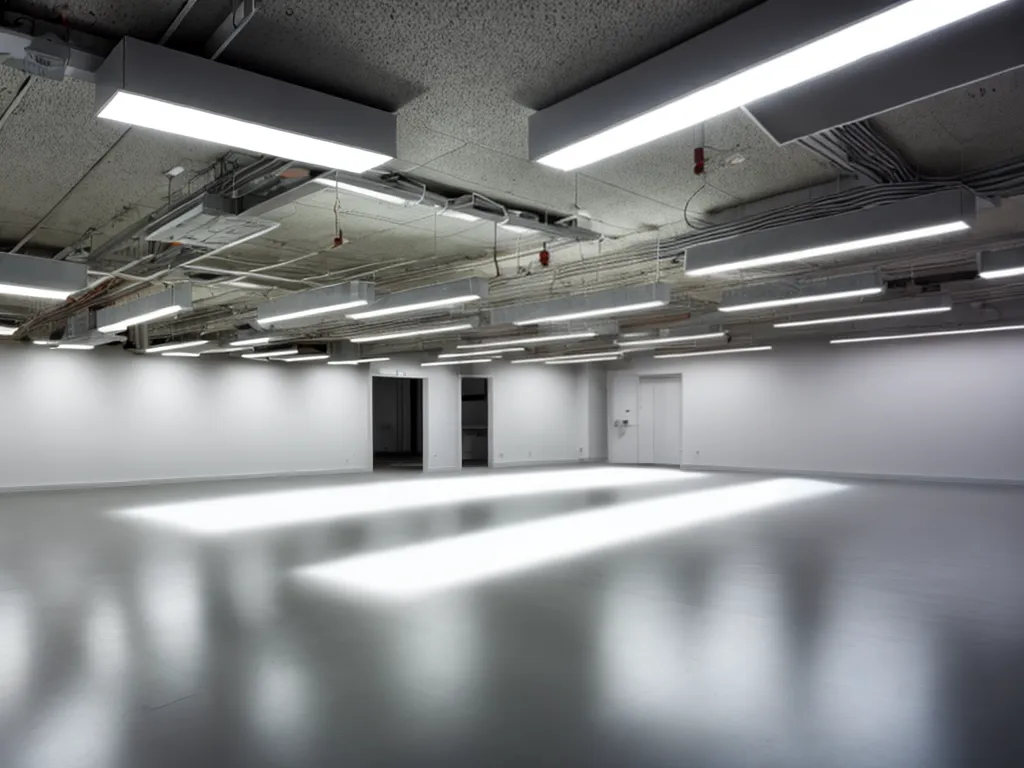
Introduction
Commercial lighting circuits provide illumination in retail stores, office buildings, warehouses, and other commercial spaces. These circuits are more complex than residential lighting and can develop issues that require troubleshooting. As an electrician working on commercial lighting, you need to understand common problems and have a systematic process for diagnosing issues. This guide covers everything you need to know about troubleshooting commercial lighting circuits.
Common Issues with Commercial Lighting Circuits
Several problems can occur with commercial lighting circuits:
Failing Lamps or Ballasts
The lamps (light bulbs) or ballasts (components regulating power to lamps) can fail. Lamps have a limited lifespan and need regular replacement. Ballasts also wear out over 5-10 years. Failed lamps or ballasts will cause all lights on that circuit to stop working.
Faulty Wiring
The wiring connecting lighting to the breaker panel can short out or disconnect due to loose connections, corrosion, damage, etc. This interrupts power flow through the circuit.
Tripped Breakers
Lighting circuits are protected by circuit breakers in the electrical panel. A tripped breaker cuts power when currents exceed safe levels. Causes include overloads from too many lights on one circuit or short circuits from damaged wiring.
Bad Switches or Sensors
Many lighting circuits have light switches or occupancy sensors. Malfunctioning switches or sensors will prevent lights from turning on even if the circuit has power.
Power Surges
Power spikes on commercial grids can damage lighting components like ballasts. Surge protectors help prevent damage but cannot fully protect from extreme events.
Steps for Diagnosing Lighting Circuit Issues
Follow these key steps to methodically diagnose and repair lighting circuit problems:
1. Visually Inspect the Lights
Walk along the lighting circuit and visually inspect each light fixture. Note any bulbs that appear damaged or burnt out. Also look for signs of external damage to fixtures, exposed wires, etc. Basic issues like burnt out lamps can often be spotted this way.
2. Check Power at the Light Switch
Use a multimeter or voltage tester to check for power at the switch that controls the lights. Set your multimeter to AC voltage and test hot to neutral. If the switch has power but lights are still not turning on, the issue is likely downstream of the switch. No power indicates an upstream wiring problem.
3. Check the Breaker Panel
Inspect the circuit breaker for the lighting circuit in the breaker panel. It may be tripped, signaling a short or overload. Reset the breaker and see if lights now have power. A breaker that immediately trips again indicates a serious underlying problem.
4. Examine the Lights and Wiring
Remove covers and visually inspect light housings and wiring connections. Look for loose, disconnected, or burnt wires. Check that ballasts are properly seated and free of burn marks. Watch for rodent damage, corroded terminals, or other issues throughout the circuit.
5. Replace Faulty Components
If faulty lamps or ballasts are found, replace these components. Ensure ratings match what the fixture requires. Test the lights afterward to see if this solved the issue.
6. Check Sensors and Switches
Inspect and replace any bad switches, sensors, or wiring connecting them. Sensors can be tested to confirm they are detecting occupancy and sending a signal.
7. Look for Damage from Power Surges or Spikes
Indications of power spikes like burnt ballasts may require adding surge protection or other solutions to mitigate damage from future events.
8. Call an Electrician for Unresolved Issues
For any lingering problems, it is best to call a qualified electrician. They can use advanced diagnostics to isolate difficult issues. Electrical troubleshooting can be dangerous when done incorrectly.
Safety Tips for Working on Lighting Circuits
Use extreme care when testing and troubleshooting live lighting circuits:
-
De-energize circuits at the breaker panel when possible before working on lights.
-
Double check wires are not live before touching. Use a non-contact voltage tester.
-
Do not work with energized circuits without proper training and equipment.
-
Have a partner serve as a safety observer to check your work.
-
Use appropriate PPE like insulated gloves, eye protection, sturdy shoes, etc.
-
Avoid touching multiple grounded surfaces to prevent shock pathways.
-
Only replace components with identical specs to avoid overloads.
Working carefully will keep you safe while troubleshooting lighting circuit issues.
Conclusion
Diagnosing commercial lighting problems involves methodically checking for common failures like bad lamps, tripped breakers, faulty sensors, and damaged wiring. Safety is paramount when testing live circuits. With diligent troubleshooting and electrical safety knowledge, lighting technicians can efficiently resolve complex issues and restore illumination to commercial spaces.